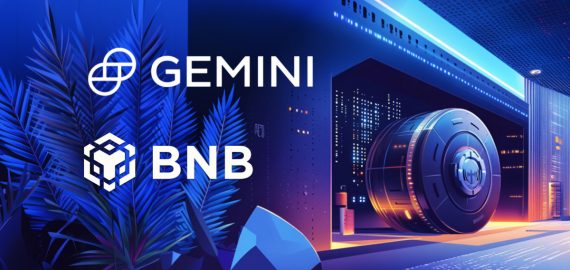Maximizing Returns With Stablecoins In 2025: A Complete Guide To Yield Farming In DeFi


In Brief
By 2025, stablecoins have evolved from simple tools for hedging and transfers to yield-bearing assets, enabling DeFi users to generate layered returns through staking, liquidity provision, and incentive programs while managing risk.

Not long ago, stablecoins primarily served as a means to protect against cryptocurrency market fluctuations and to facilitate the transfer of funds between digital asset platforms. While they continue to perform these functions effectively, along with supporting additional applications such as payments and lending, by 2025 they have taken on a new role: participating in yield farming. The rise of yield-bearing stablecoins has introduced new possibilities for decentralized finance (DeFi) users, allowing them to earn an annual percentage yield (APY) directly on their stablecoins while also deploying those same assets within external protocols to generate additional returns. This approach enables the accumulation of multiple layers of yield, a concept that has become increasingly popular among DeFi participants in 2025.
Yield opportunities have existed in DeFi for some time, even for holders of stablecoins such as USDT and USDC. For example, depositing USDC into a protocol like Aave could provide a supply APY of around 3.85% as of October 2025. Although this offers a modest return, it comes with certain limitations: the yield is generally lower compared to activities such as staking ETH, and once the stablecoins are locked within the protocol, their utility is restricted.
Yield-bearing stablecoins present an alternative model. The primary yield is embedded directly into the stablecoin itself, requiring minimal user action aside from potentially staking it within its issuing protocol. The returns tend to exceed those available through traditional methods like ETH staking or lending on Aave. Moreover, many of these stablecoins operate on a liquid staking framework, allowing holders to use the associated derivative token in other protocols to earn further yield.
This evolution raises questions about how conventional stablecoins can remain competitive. The appeal of yield-bearing alternatives is evident, which explains why the sector has expanded to a valuation of approximately $15 billion in 2025. However, despite their perceived stability, these assets are not without risk, as multiple factors can influence the actual yield achieved. The following sections will explore these considerations and provide a closer examination of how stablecoin yield farming functions in practice.
Stablecoin Yield Farming
The fundamental processes behind stablecoin yield farming involve exchanging or minting stablecoins, staking them to produce yield-generating tokens, and in some cases, allocating these tokens to liquidity pools or vaults for supplementary rewards. Each phase builds upon the previous one, enabling multiple layers of yield generation while requiring careful risk management. Owing to this composability—the ability to integrate various DeFi components—participants can earn returns from several sources at once. There is, however, no necessity to engage in every stage; stablecoin yield farming allows for flexible strategies ranging from cautious to more ambitious, depending on individual risk tolerance. Expanding the number of steps in the process typically increases potential exposure to risk. This does not inherently imply that comprehensive yield farming strategies are excessively risky; rather, it indicates a greater chance that certain components may fail or underperform. By gaining a clear understanding of how each protocol functions, along with its associated benefits and risks, participants can make informed decisions about how to allocate their stablecoins effectively and optimize potential returns.
Swapping Or Minting Stablecoins
In order to begin farming with stablecoins, the first requirement is to obtain them. This can be achieved either by swapping existing assets such as ETH for stablecoins through decentralized exchanges like Uniswap or Curve, or by minting them directly from a stablecoin protocol. Minting typically involves depositing cryptocurrency as collateral to generate stablecoins of lesser value, reducing liquidation risk if the collateral’s price falls. The process has become more capital-efficient, especially when stablecoins such as USDC can be deposited to mint yield-bearing versions without the concern of liquidation.
These yield-bearing stablecoins, often referred to as synthetic stablecoins or synthetic dollars, mirror traditional stablecoins in maintaining a peg to the USD but additionally generate yield, making them useful across DeFi ecosystems. Popular minting platforms include Ethena (USDe), Sky (DAI), and Falcon Finance (USDf), each supporting various forms of collateral such as ETH, BTC, or other stablecoins. The general procedure involves acquiring the collateral asset, connecting a compatible wallet, depositing collateral above the required ratio, minting synthetic stablecoins, and monitoring the collateral’s value to maintain stability. Once yield-bearing stablecoins are created, they can then be deployed to start generating returns.
Staking Stablecoins To Earn Yield
In order to access native yields from protocols such as Ethena and Falcon, newly minted stablecoins must be staked within their respective systems. This process involves depositing the tokens to receive yield-bearing counterparts like sUSDe from Ethena or sUSDf from Falcon, which accumulate returns derived from protocol revenue and other income sources. The mechanism is similar to Aave’s aUSDC, which generates a variable APY depending on lending demand.
The ability of synthetic stablecoin platforms like Ethena to maintain steady yields, even amid fluctuating markets, stems from delta-neutral strategies that balance long and short exposure. Ethena, for instance, uses collateral to open short perpetual futures on centralized exchanges, earning positive funding rates from long traders during bullish conditions while reallocating collateral to other yield opportunities. This model allows USDe stakers to earn around 5% as of October 2025. Falcon follows a similar delta-neutral and arbitrage-based approach, capturing market inefficiencies and funding spreads while planning to integrate real-world assets such as gold and US Treasury bills. Its stakers currently earn yields exceeding 9%.
Staking synthetic stablecoins typically requires connecting a wallet, selecting a stablecoin, and depositing it into the chosen protocol to receive its yield-bearing version. The base stablecoin remains pegged to $1, while the yield-bearing counterpart gradually appreciates in value as returns accumulate—for example, sUSDe trading near $1.20 and sUSDf around $1.07 in late 2025. Because yields fluctuate based on market factors, monitoring performance through the protocol dashboard or tools like Zapper is essential to track ongoing returns.
Providing Staked Tokens To DeeFi Pools And Vaults
The final stage of stablecoin yield farming involves using staked assets such as sUSDe or sUSDf to generate additional returns through liquidity provision. These tokens can be deposited into other DeFi platforms that offer rewards for supplying liquidity. Tools like DefiLlama help identify suitable opportunities by comparing yields, tracking total value locked, and monitoring performance trends. Consistent yields over recent weeks generally suggest stability, while declining rates may signal the need to look for alternatives. Because APY is measured annually, full returns require maintaining liquidity for an extended period, though early withdrawals are possible with proportionally smaller rewards.
An alternative to manual liquidity provision is depositing staked tokens into automated vaults that manage yield strategies on behalf of users. Protocols such as Yearn and Beefy offer stablecoin vaults that optimize returns while displaying risk metrics to aid decision-making. Pendle provides another approach through dynamic vaults that tokenize future yield into tradable assets known as PT tokens, which are integrated across multiple DeFi ecosystems. For instance, Morpho supports PT-sUSDf, enabling users of Falcon Finance to use sUSDf as collateral while continuing to earn yield from their original staking position.
Taking Advantage Of Incentive Points Programs
The yield sources discussed so far are generally considered sustainable, meaning they can provide consistent returns over time, even during quieter market periods, though they naturally perform better when trading volumes and liquidity are high. Another, typically shorter-term, method to earn yield is through protocol incentive programs, which reward users for actions like minting stablecoins or providing liquidity. These programs often distribute points that can later be converted into tokens or airdropped as rewards. For instance, Falcon has allocated a portion of its $FF governance token to participants in its Miles points program. Established protocols like Compound and Aave also distribute governance tokens such as COMP or CRV to encourage liquidity, sometimes creating temporarily high APYs for early participants. Tools like DeFi Llama can help track how much of a stablecoin’s yield comes from such token incentives.
Risk management remains essential. Looping assets through multiple protocols increases exposure, though using audited and widely adopted platforms keeps risk relatively low. Even so, no protocol is entirely immune to exploits, as DeFi is continuously targeted by hackers. Key areas to watch include impermanent loss when pooling stablecoins with volatile assets, delays and higher fees during network congestion, and maintaining adequate collateral ratios to prevent liquidation. Regular monitoring and having additional funds available to top up collateral can mitigate these risks.
Redeeming synthetic stablecoins is a straightforward process. First, withdraw staked tokens from any pool or vault. Then, return them to the issuing protocol to claim the underlying stablecoin. Initiate a redemption, which may include a cooldown period, and finally withdraw the original crypto collateral. Alternatively, synthetic stablecoins can be purchased on a decentralized exchange to repay a loan more quickly if needed, completing the cycle of stablecoin yield farming.
Stablecoin yield farming provides a practical method to earn relatively low-risk returns within DeFi. While not entirely risk-free, careful research and avoiding pools solely based on the highest APY can allow users to safely accumulate yield while benefiting from the stability of pegged assets. It is advisable to start with smaller amounts and spread holdings across multiple protocols or vaults to reduce exposure. With yield opportunities expanding through additional revenue streams like tokenized real-world assets and the sector’s rapid growth, stablecoin farming remains a robust strategy for generating steady returns.
Disclaimer
In line with the Trust Project guidelines, please note that the information provided on this page is not intended to be and should not be interpreted as legal, tax, investment, financial, or any other form of advice. It is important to only invest what you can afford to lose and to seek independent financial advice if you have any doubts. For further information, we suggest referring to the terms and conditions as well as the help and support pages provided by the issuer or advertiser. MetaversePost is committed to accurate, unbiased reporting, but market conditions are subject to change without notice.
About The Author
Alisa, a dedicated journalist at the MPost, specializes in cryptocurrency, zero-knowledge proofs, investments, and the expansive realm of Web3. With a keen eye for emerging trends and technologies, she delivers comprehensive coverage to inform and engage readers in the ever-evolving landscape of digital finance.
More articles

Alisa, a dedicated journalist at the MPost, specializes in cryptocurrency, zero-knowledge proofs, investments, and the expansive realm of Web3. With a keen eye for emerging trends and technologies, she delivers comprehensive coverage to inform and engage readers in the ever-evolving landscape of digital finance.


















































